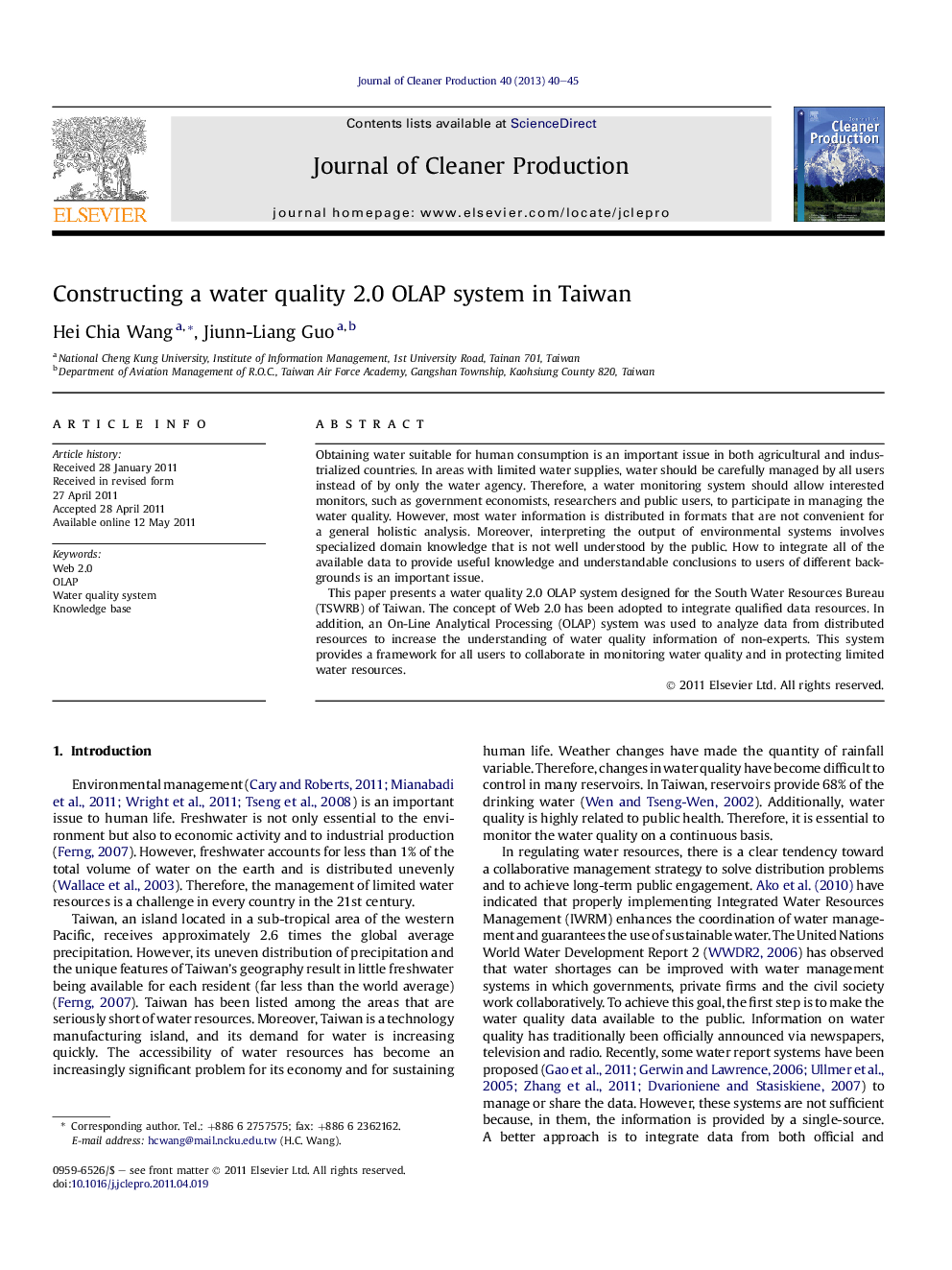| Article ID | Journal | Published Year | Pages | File Type |
|---|---|---|---|---|
| 1745584 | Journal of Cleaner Production | 2013 | 6 Pages |
Obtaining water suitable for human consumption is an important issue in both agricultural and industrialized countries. In areas with limited water supplies, water should be carefully managed by all users instead of by only the water agency. Therefore, a water monitoring system should allow interested monitors, such as government economists, researchers and public users, to participate in managing the water quality. However, most water information is distributed in formats that are not convenient for a general holistic analysis. Moreover, interpreting the output of environmental systems involves specialized domain knowledge that is not well understood by the public. How to integrate all of the available data to provide useful knowledge and understandable conclusions to users of different backgrounds is an important issue.This paper presents a water quality 2.0 OLAP system designed for the South Water Resources Bureau (TSWRB) of Taiwan. The concept of Web 2.0 has been adopted to integrate qualified data resources. In addition, an On-Line Analytical Processing (OLAP) system was used to analyze data from distributed resources to increase the understanding of water quality information of non-experts. This system provides a framework for all users to collaborate in monitoring water quality and in protecting limited water resources.
